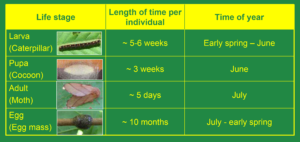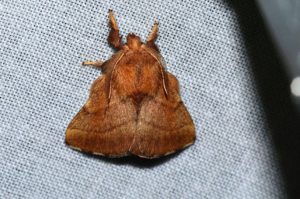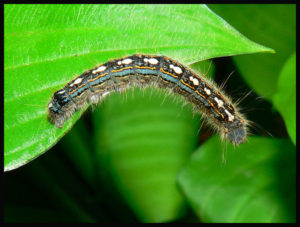The RM of St. Clements does not spray Forest Tent caterpillars.
Find more information about Forest Tent caterpillars on the province’s website.
Forest Tent (Malacosoma disstria)caterpillar facts
- They are a native insect
- Caterpillars (or larvae) prefer to eat trembling aspen but will eat any broad-leafed tree or shrub
- Widespread outbreaks happen approximately every 10 years, usually lasting three to six years. Feeding ranges from a light thinning of the tree top to trees completely stripped of their leaves
- Usually the trees don’t die, and the leaves grow back later in the season
- If the tree is stripped of its leaves for two or more years, it will weaken and can eventually die
- They are the only tent caterpillers to use a nomadic foraging strategy – meaning they move to new and distant locations
- They feed for 5-6 weeks

HOW TO MANAGE THEM
- Do nothing as the trees usually survive
- Place barriers on trees like sticky bands
- Remove egg masses before they hatch
- Remove larvae when congregated
- Apply Bacillus thuringiensis, a natural, soil dwelling bacterium particularly effective on inch worms of all types.
- Use easily applied spray to hit worms and protect the le
 aves at the first signs of damage. BTK sprays do not harm honey bees or birds and are safe for use around pets and children.
aves at the first signs of damage. BTK sprays do not harm honey bees or birds and are safe for use around pets and children.
- Use easily applied spray to hit worms and protect the le

